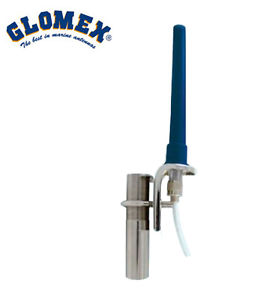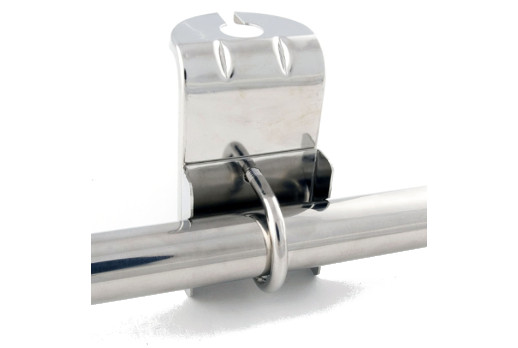Glomex RA111AIS
Aerial designed and tuned specifically for use on the AIS frequencies at 162mHz. Note that this sale is for aerial and bracket only – if you need cable please see our other advertisement for Glomex RA111AIS with RG8X cable cut to your specified length.
£75.00
24 in stock (can be backordered)
A flexible and pliable stubby type just 15cm long (22 cm with bracket, this fantastic little aerial can be mounted low down e.g. on a stern rail and won’t end up getting bent as a result of being leant over whilst deploying ropes etc. Mounting Low down is acceptable for AIS as there is no real need to see and be seen to the horizon – AIS being a close up collision warning system. It is interesting to see other vessels 20+ miles away but a vessel 20+ miles off will not be a collision hazard developing. We discuss this in greater detail in our aerials Blog which you can access by clicking the button below.
These aerials have become a top selling line for us. This is probably because they are the perfect solution for a small and robust dedicated AIS aerial. Customers like that they can have the cable made up to their specified length using a better quality low loss cable than these aerials come supplied with as standard and that we can leave one end connector off for an easier install through bulkheads and small holes. The stainless bracket is universal fitting and can be surface or rail mounted.
Glomex RA111AIS TECHNICAL SPECIFICATIONS
| FREQUENCY RANGE |
161,975 – 162,025 MHz |
| GAIN AVERAGE |
1 dB |
| IMPEDANCE |
50 ohms |
| POLARIZATION |
Vertical |
| SWR |
≤ 1,2 at 162 MHz |
| MAX INPUT POWER |
50 W |
| DC GROUND |
No |
| ANTENNA LENGHT |
140mm/5” |
| ANTENNA WEIGHT |
220g/7,76oz |
| TERMINATION |
SO239 for PL259 male connector |
Just a note regarding gain of an aerial:
An aerial cannot amplify the RF signal in the same way that an audio amplifier will make a small sound much larger. Gain in an aerial refers to how directional it is. An aerial can be made to be more or less directional and if you know where your signal is coming from then a very high gain aerial (directional) pointed in that direction will be the best choice but it will be very much less efficient in other directions. Where a signal may come from any direction it follows that low gain aerial (less directional) aerial will be better. As an example of how this works in reality: your TV aerial will be very high gain as it points to a specific TV transmitter that doesn’t move, whereas your mobile phone aerial must receive signals from all directions so will be low gain. For marine band VHF and AIS aerials we need to receive equally well through 360 degrees and so should be low gain, 3db or less. The RA111AIS has a gain of 1dB which is excellent as 0dB is considered theoretical and probably unachievable in practice.
There are lots of explanations for aerial/antenna gain on the internet and some get very complicated but the link below has quite a good explanation for anyone interested.
Click this link (antenna-theory.com)




